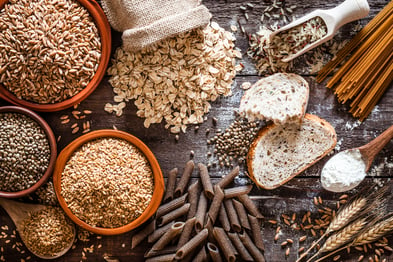.jpg?width=408&name=GettyImages-1131960080%20(1).jpg) We are in the throws of quarantine and you’ve gone through yet another bag of Cheetos without paying much attention to them. Sound familiar? If so, you could be eating out of boredom. Now that most people are working from home, it can be challenging not to grab an extra snack during that conference call or while typing out an email. This kind of eating can add up quickly and cause a lot of detriment to your health and weight loss goals. Focusing on your nutrition is crucial during these times where it can be difficult to workout with most gyms being shut down.
We are in the throws of quarantine and you’ve gone through yet another bag of Cheetos without paying much attention to them. Sound familiar? If so, you could be eating out of boredom. Now that most people are working from home, it can be challenging not to grab an extra snack during that conference call or while typing out an email. This kind of eating can add up quickly and cause a lot of detriment to your health and weight loss goals. Focusing on your nutrition is crucial during these times where it can be difficult to workout with most gyms being shut down.
Here are a few tips to help combat boredom eating:
- Remove unhealthy snacks for your house. This one is simple, avoid the urge all together by getting rid of any unhealthy snacks that you might have. Try to replace them with the healthy options that are mentioned below.
- Drink a glass of water instead. Oftentimes you are in need of hydration rather than food and the sensation can feel similar between the two. Drink some water and then decide if you are actually hungry or not. How many bottles of water have you drank today?
- Chew sugar-free gum. Again, another simple solution, but it could help save you from a lot of empty calories. Chewing some gum can help sate some feelings of hunger and give you a little distraction from being bored. Opt for sugar-free options to avoid extra calories and sugar.
- Distract yourself. Find a way to keep yourself busy to distract yourself from hunger or being bored. Do some bodyweight exercises, go for a walk, or skype a friend or loved one over the internet! Anything to help keep your attention and prevent unnecessary snacking.
- Find a healthy replacement. If you have tried everything and need to have a snack; try to make it a healthy one! Eat something that is nutrient dense and that will provide satiety. Some examples could be an apple and peanut butter, low fat popcorn, or veggies and hummus. Fruits and vegetables are always a good option.

 Whole grains have been advertised as being part of balanced diet for as long as I can
Whole grains have been advertised as being part of balanced diet for as long as I can 